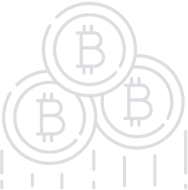代币基本信息
Claim this listing and publish updates.
基本信息
| 平台 | 未知 |
|---|---|
| 类型 | 未知 |
| 接受币种 | Others |
| 流通百分比 | 未知 |
| KYC | 未知 |
| 受限地域 | 未知 |
| 网站 | 首页链接 |
| 白皮书 | 下载 |
项目介绍
Our history is our greatest asset that we need to preserve for both current and future generations.
The Capua coins (that mean KAPU in the oscus alphabet) were forged during the Second Punic War (218 BC) in one of the few cities in the Italian peninsula that decided to ally with Hannibal to fight against the Roman Empire.
To achieve this, Capua broke relations with Rome and, in order to finance its expenses, forged and spread its coins around the cities of Atella and Galatia. The majority of the coins were minted in bronze and represented a similar value to those circulated by Rome (Rutter et al, 2001: p. 9). Archaeologically, it is known that Capua certainly minted a silver coin called the Didramma (Sambon 1021; HN Italy 480) and possibly a golden coin called the dracma aurea (HN Italy 479, SNG ANS 145; Rutter et al, 2001: p. 64).
The coin on the left represents the reverse of an oncia with a board running to the right. The value (a “tortello”) is indicated by the dot that can be found at the top of the coin, whilst the inscription “Kapu" on the bottom indicates the mint. (catalogue: HN Italy 506, Sambon 1043). Reference: Rutter et al. (2001). Historia Numorum - Italy. London, p. 9.
Our Archaeological Blockchain aims to give new life to the sector OF THE ARCHEOLOGY proposing a valid tool that would allow a natural evolution in qualitative terms.
It is not about visionary ideas, but about a technological process of which we are already part, which is constantly evolving and is trying to give answers today to questions that will be asked tomorrow, in respect for a necessary balance of interests. This is just the beginning of the story! Now it is up to you to decide whether to enter as an actor to write the sequel, or stop as a spectator to look at the others who are going out to the future.
DECENTRALIZED
Provides a more decentralized voting system than other DPoS consensus models.
ENERGY SAVING
The KAPU DPOS based system is essential, safe and also compatible with energy saving
SECURITY
The blockchain is a distributed database that allows anyone to add information following presetted and approved rules
INNOVATIVE
The innovative revolution and conceptual in the archaelogical sector, will be allowed thanks to the development of a universal decentralized index which will be free for University and Ministry
FREE BOOSTER
Such information sharing mode will ensure a concrete support to those professional user that operates in the archaelogical world
NOTARIZATION
The most important changes are happening right in the legal notary activity, a sector intended to be subject to a radical rethinking and of a substantial revision
